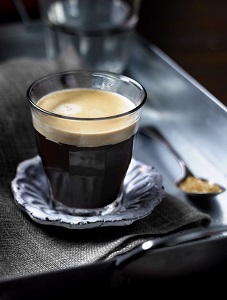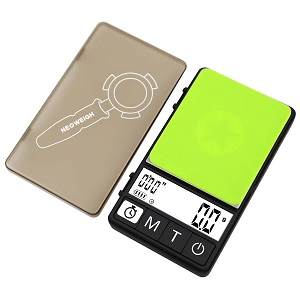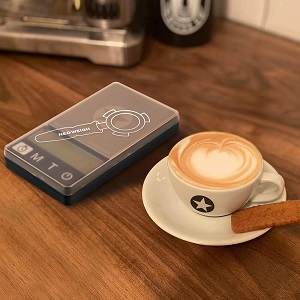A scale can be an essential tool in your search for the perfect espresso recipe and, most importantly, to know exactly how to reproduce that perfect cup of coffee over and over.
As budding baristas, we think of making great espresso as an art rather than a science. But the truth is it is both art and science.

Finding that perfect recipe for a great coffee drink takes creativity. But once you found that perfect shot of espresso or more elaborate drink, as a barista you want to be able to reproduce it exactly in the future.
Why is weighing important?
The short answer is that weighing ingredients is important to being able to reliably reproduce your favorite espresso shots and drinks.
Unlike pour-over coffees or drip coffees, the good news is that once you have your espresso machine programmed (for machines with that capability), you can simply get an identical drink by recalling the programming.
The key factors determining the taste of your shot are the coffee and roast you use, the grind of the coffee, how much coffee is tamped into the portafilter, and the water used—temperature and quantity.
A scale is the only precise way to measure and reproduce the variables associated the coffee beans — quantity and grind. You will use your scale to program (or to adjust the programming) to your taste.
It is critical that you get the programming the way you want it for your future success as a barista.
Using a Drip-tray scale
You can use a small kitchen scale, so long as it has sufficient accuracy, to weigh the coffee you’ve tamped into your portafilter, but scales made for this purpose fit in place of the drip tray and can easily be set for Tare weight.
Here’s an inexpensive and good quality scale we’ve found that does what you need. This scale also includes a very useful timer.

View Product on Amazon.com
How do I use a scale to make espresso?
You will need to acquire an accurate scale for this process. As mentioned, some kitchen scales will work, but they are generally not super accurate, often don’t like getting wet, and are not conveniently sized for espresso machines.
First, zero (or “tare”) your scale with an empty portafilter. Set your grinder for espresso, pack the portafilter, and weigh the combination to know your net coffee weight. Once you’ve gone through this exercise, you can use the timer on your grinder (assuming you have a timer) to get the perfect amount of ground coffee every time.
Programming the perfect shot
Use the tamped portafilter to manually pull a shot. The “best” water to espresso volume may depend on the roast, but 2:1 water to espresso is a good starting point. Use the scale to accurately stop your pour at the correct volume. Use this to dial in your programming, and you will have the perfect shot program on your machine to recall as often as you want.
The scale is the tool that allows you to weigh the ingredients precisely for that programming.
